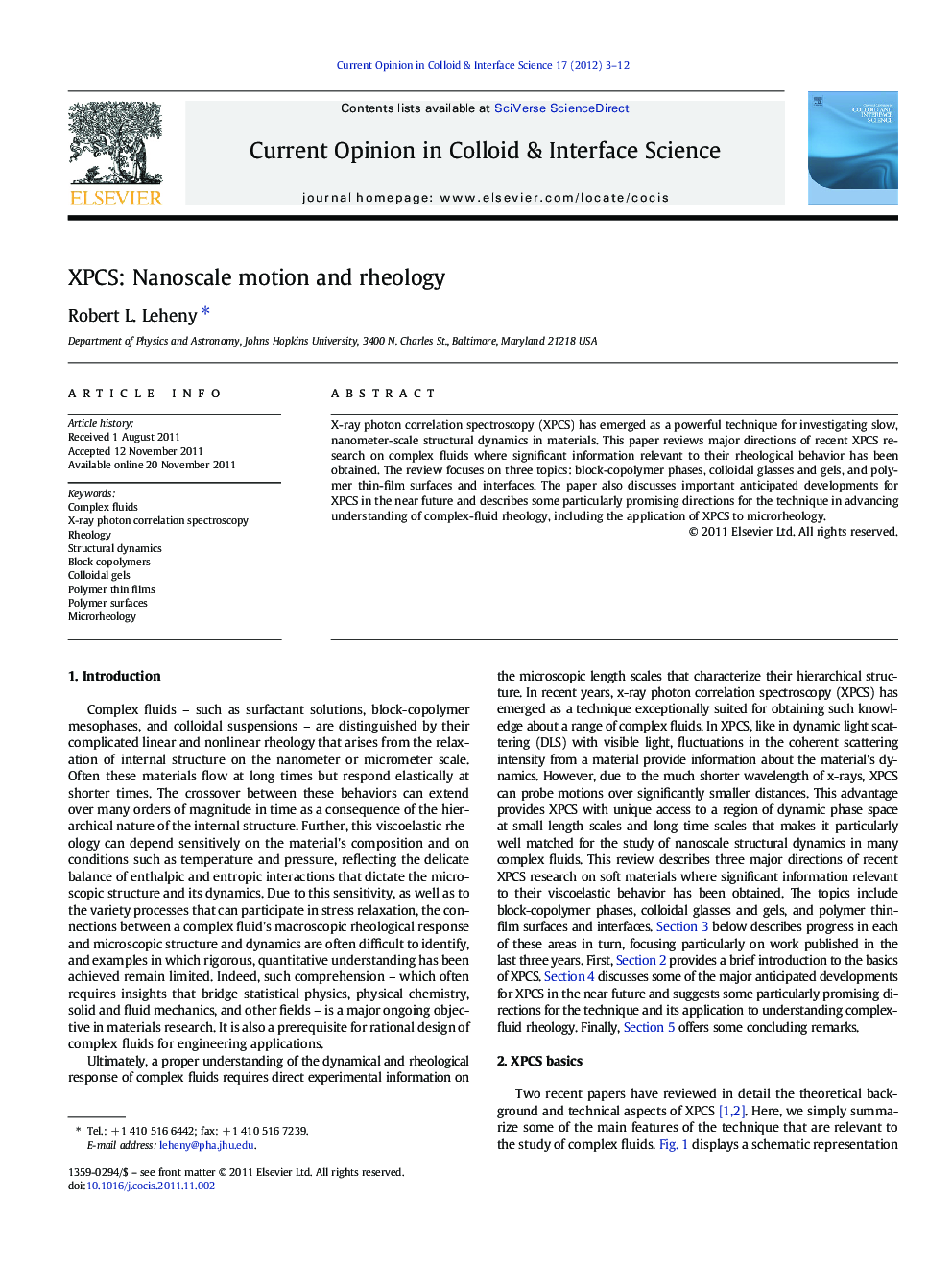| Article ID | Journal | Published Year | Pages | File Type |
|---|---|---|---|---|
| 603462 | Current Opinion in Colloid & Interface Science | 2012 | 10 Pages |
X-ray photon correlation spectroscopy (XPCS) has emerged as a powerful technique for investigating slow, nanometer-scale structural dynamics in materials. This paper reviews major directions of recent XPCS research on complex fluids where significant information relevant to their rheological behavior has been obtained. The review focuses on three topics: block-copolymer phases, colloidal glasses and gels, and polymer thin-film surfaces and interfaces. The paper also discusses important anticipated developments for XPCS in the near future and describes some particularly promising directions for the technique in advancing understanding of complex-fluid rheology, including the application of XPCS to microrheology.
Graphical abstractX-ray photon correlation spectroscopy (XPCS) employs time correlations in the scattering intensity from a coherent x-ray beam to uncover nanometer-scale structural dynamics in materials. This capability has provided unique insight into the microscopic origins of the rheological behavior of complex fluids.Figure optionsDownload full-size imageDownload high-quality image (265 K)Download as PowerPoint slideHighlights► XPCS enables investigation of slow, nanometer-scale structural dynamics in materials. ► XPCS has illuminated connections between microscopic dynamics and viscoelasticity in complex fluids. ► Major subjects for XPCS include block copolymers, colloidal glasses and gels, and polymer thin films and interfaces. ► Opportunities with XPCS are expected to grow dramatically in the coming years.
